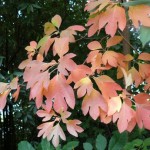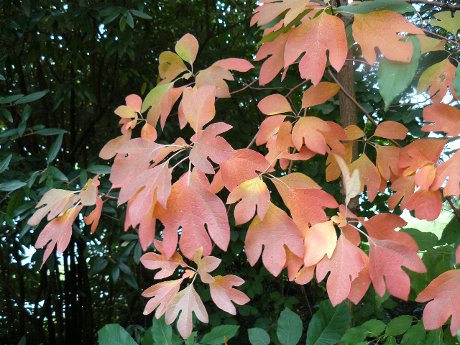 Nearly everyone loves the annual colorful pageant of autumn leaves on the trees. But once they fall, nearly every property owner despises them. There seems to be a compulsive instinct to remove every last leaf from our yards and gardens and an obsession to rake the ground bare.
Nearly everyone loves the annual colorful pageant of autumn leaves on the trees. But once they fall, nearly every property owner despises them. There seems to be a compulsive instinct to remove every last leaf from our yards and gardens and an obsession to rake the ground bare.
But now for some kind words in defense of those fallen leaves.
Beyond providing a colorful carpet, fallen leaves—called “leaf litter”—can be used in a variety of ways, including as weed control, fertilizer, soil amendments, and mulch. Just think how counterproductive, wasteful, and expensive it is to remove the leaves and have them hauled away, only to turn around and buy mulch, soil amendments, and fertilizer!

When leaves are removed from our gardens and landscaping in the fall, we leave the ground exposed to erosion—and bulbs and roots vulnerable to both sudden temperature changes and the temperature extremes of winter. That blanket of fallen leaves is just that—a natural blanket protecting the soil and what lies below. It also acts like a sponge, retaining large quantities of water that would otherwise be runoff and slowly releasing the moisture into the soil.
Leaf litter is good not only for our flora but also for fauna as well! It provides a habitat for many creatures, including organisms that help keep our landscape ecologically balanced, as well as protects small critters from predators with its camouflaging effect (like the rabbit pictured in my backyard landscape).
 What about leaves on the lawn? A blanket of leaves could kill the grass. Rather than raking and removing the leaves, mulch them with the lawn mower. This allows them instantly to become small particles and get assimilated into the lawn. You’ll save the time and hassle of raking and removing them while providing the lawn with free fertilizer. This works best if it’s done several times during the leaf litter season. Leaves on driveways, walks, and patios can be gathered up and scattered over the landscaped portions of one’s property.
What about leaves on the lawn? A blanket of leaves could kill the grass. Rather than raking and removing the leaves, mulch them with the lawn mower. This allows them instantly to become small particles and get assimilated into the lawn. You’ll save the time and hassle of raking and removing them while providing the lawn with free fertilizer. This works best if it’s done several times during the leaf litter season. Leaves on driveways, walks, and patios can be gathered up and scattered over the landscaped portions of one’s property.
 For my landscape paths, I recycle another one of nature’s fine offerings: needles from white pines. While I really like leaves, I love needles! They suppress weeds and never wash out, and since they decompose slower than leaves, they last the full year. Each fall I make my rounds, retrieving pine needles that others have removed and piled along the curb—proving that one person’s trash is another’s treasure! I use covered plastic storage bins to transport them home, where I scatter them a few inches thick on my paths (as pictured above).
For my landscape paths, I recycle another one of nature’s fine offerings: needles from white pines. While I really like leaves, I love needles! They suppress weeds and never wash out, and since they decompose slower than leaves, they last the full year. Each fall I make my rounds, retrieving pine needles that others have removed and piled along the curb—proving that one person’s trash is another’s treasure! I use covered plastic storage bins to transport them home, where I scatter them a few inches thick on my paths (as pictured above).
To rake or not to rake? I prefer to follow nature’s example and, to paraphrase the Beatles, “leaf it be!”





